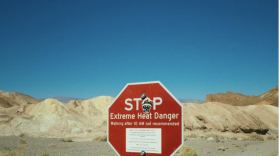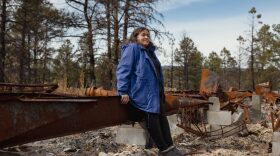-
On Thursday, health advocates told lawmakers that increasing extreme heat is impacting Indigenous people’s wellbeing and traditional ways of life.
-
Four National Wildlife Refuges across the country now have support from the federal government to expand, and Muleshoe National Wildlife Refuge, which spans across the Texas-New Mexico border, is one of them.
-
A judge heard arguments on Friday on whether a high-profile environmental lawsuit brought on by the Center of Biological Diversity, WildEarth Guardians and several frontline Native American communities should go to trial.
-
A U.S. agency accidentally torched their communities. Depending on how courts define damage, those who had the least to begin with could wind up with the smallest checks.
-
Since 2020 the state has allowed oil and gas producers to temporarily stop running pumps because the pandemic economy was particularly bad for business. But despite the rebound in oil prices, there are still more than 1,000 wells sitting idle.
-
Wyoming researchers show that utility-scale solar developments can directly and indirectly affect habitat and create movement barriers for ungulates such as deer, elk and pronghorn.
-
A paper out of the University of Utah shows that plume heights are increasing more than 300 feet every year in mountain ranges in Utah, Colorado, New Mexico and Arizona.
-
Officials in New Mexico recently celebrated the purchase of about 54,000 acres to create its largest state-owned recreation area, and it’s one of the biggest public land acquisitions in the U.S. this year.
-
This spring, the Eagle County Regional Airport near Vail, Colorado, began offering the fatty jet fuel sourced from unwanted livestock tallow. It's a so-called sustainable aviation fuel with a lower carbon footprint.
-
With a robot, an audio recorder and a stick, researchers have developed a way to tap their way into remotely alerting safety inspectors of potential rockslides.
Play Live Radio
Next Up:
0:00
0:00
Available On Air Stations










